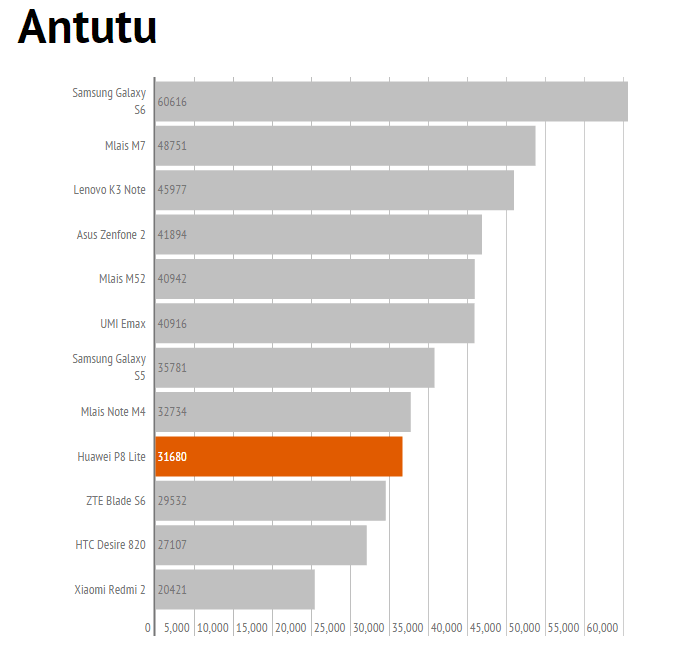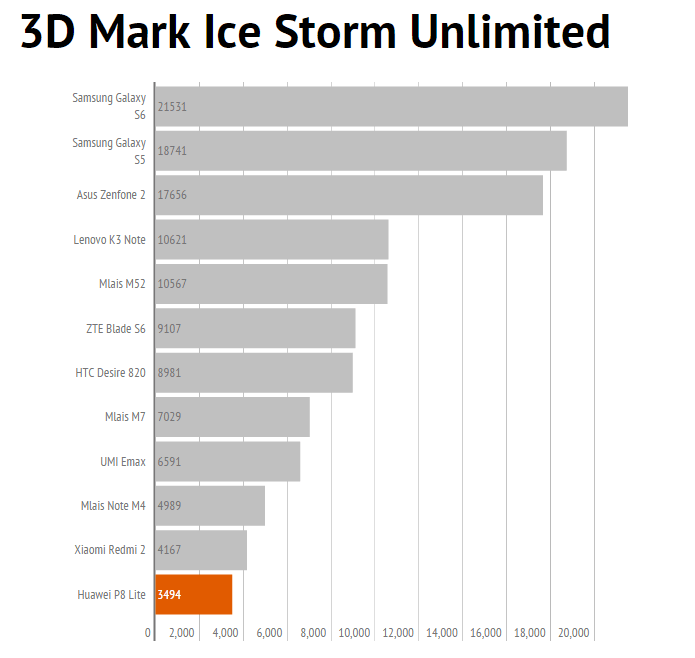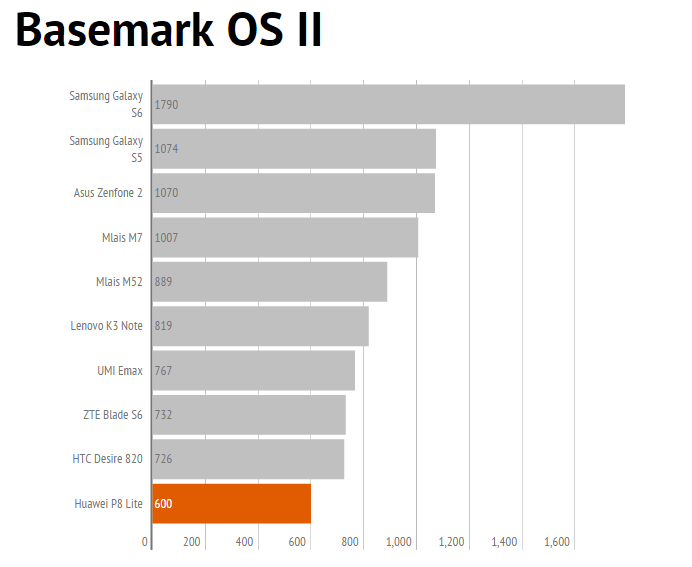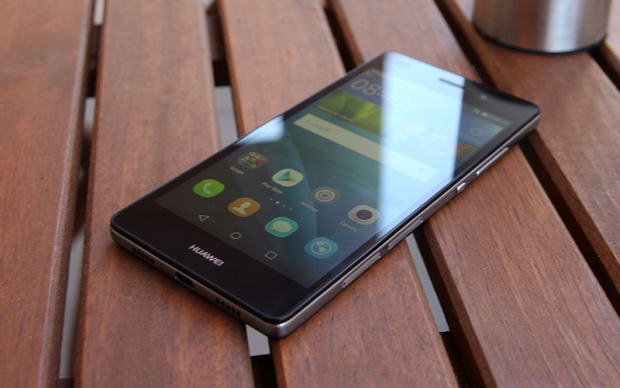Index
Huawei P8 Lite Specs and Performance
The spec is not spectacular. After all, this is a mid-range device and it’s roughly on a par with other 5-inch devices based on MT6753 and Snapdragon 615 processors. The biggest difference is in the SoC department, so let’s take a closer look.
- SoC: HiSilicon Kirin 620, 28nm HPM
- CPU: Eight 64-bit Cortex-A53 cores clocked at up to 1.2GHz
- GPU: ARM Mali-T450 MP4
- RAM: 2GB
- Storage: 16GB internal storage, microSD slot up to 64GB
- Display: 5-inch 720p IPS panel
- OS: Android 5.0
- Rear camera: 13-megapixel, OmniVision OV13850 sensor, f2.0 aperture
- Front facing camera: 5-megapixel OmniVision OV5648 sensor, f2.4 aperture
- Battery: 2200mAh, non-replaceable
- Dimensions: 143x70.6x7.6mm (5.62 x 2.77 x 0.30in)
- Weight: 131g
- WiFi and Bluetooth: 802.11b/g/n WiFi and Bluetooth 4.0
- Sensors: ambient light, direction, accelerometer, compass, proximity, GPS, A-GPS,
- SIM card: dual SIM (micro and nano SIM), dual standby
- Network support:
- 2G: GSM 850/900/1800/1900MHz
- 3G: WCDMA 900/2100MHz
- 4G: FDD-LTE 1800/2100MHz
We already mentioned the fact that Huawei markets this phone with a different SoC in some markets, but this unlocked, international version ships with the in-house Kirin 620. The chip was obviously tuned for efficiency over performance, so it ended up with relatively low clocks (up to 1.2GHz) and an outdated GPU.

The Mali-T450 MP4 is clearly past its prime, and GPU benches reveal that it falls short of Mali-T720, T760 and Adreno 405 GPUs used in similar MediaTek and Qualcomm application processors. Huawei employs this chip in a few devices, such as the budget Huawei Honor 4X. Due to the underpowered GPU, the Kirin 620 simply cannot keep up with competing SoCs in graphics perofmance, so gamers should look elsewhere.

Luckily, the processor is frugal, which is good considering the 2200mAh battery. That's its only redeeming feature: on the whole, the Kirin 620 is noticeably slower than octa-core A53 parts from Qualcomm and MediaTek. In GPU-bound tests, it is outperformed by some quad-cores as well.

OmniVision sensors tend to get a bad reputation, as many consumers prefer Sony and Samsung camera sensors. However, in our opinion this perceived inferiority doesn’t have much to do with OmniVision sensors, but rather the way they are implemented. For example, the Lenovo K3 Note features the same OmniVision sensor, yet it manages to outperform a number of phones with Sony 13-megapixel cameras. We will take a closer look in our imaging tests.
There’s not much to say about the rest of the spec. Bear in mind that the Kirin 620 version of this phone supports fewer LTE bands than the Snapdragon 615 variant, and it maxes out at Cat 4.




